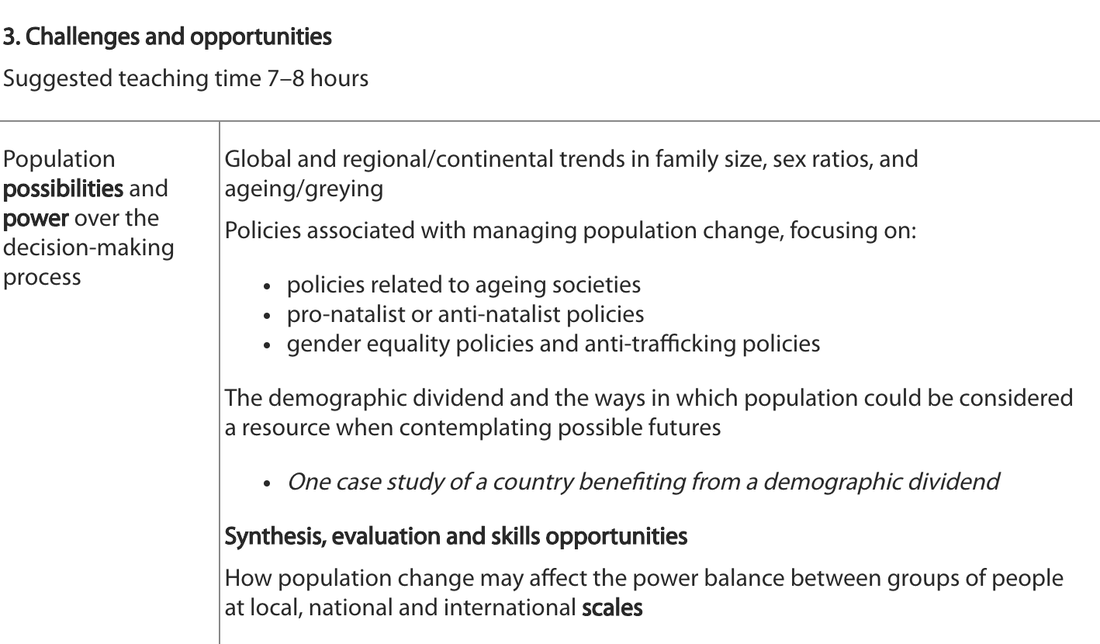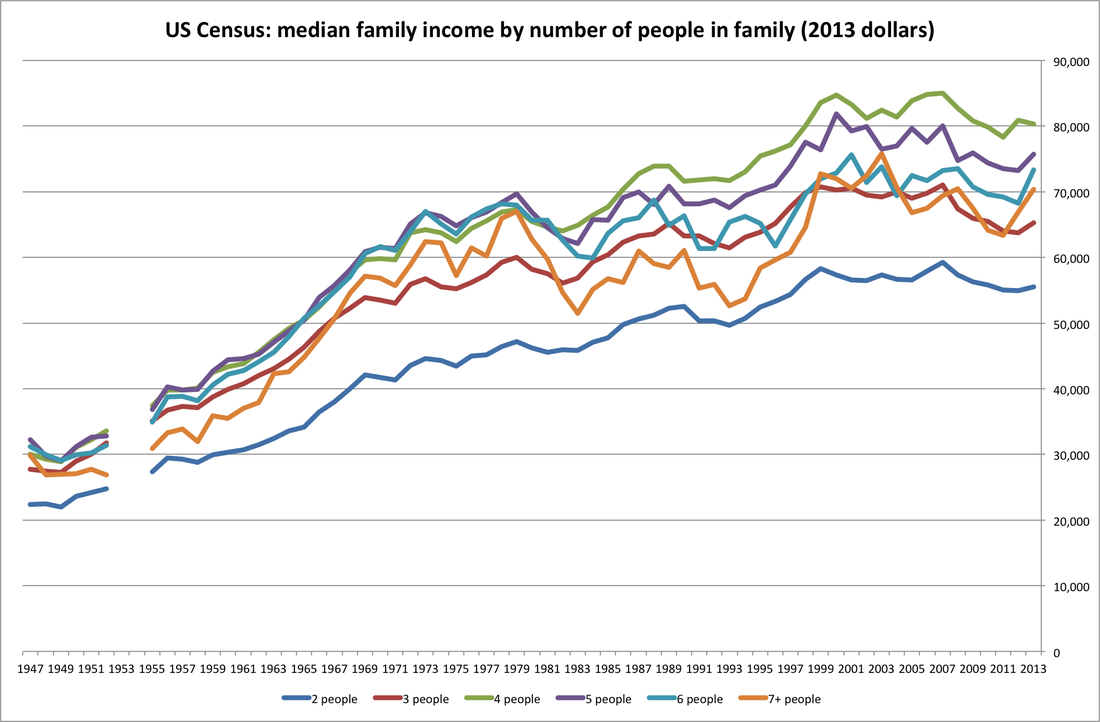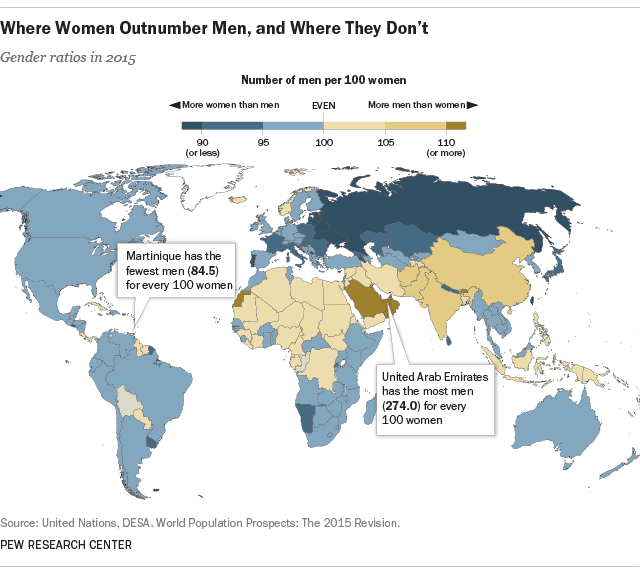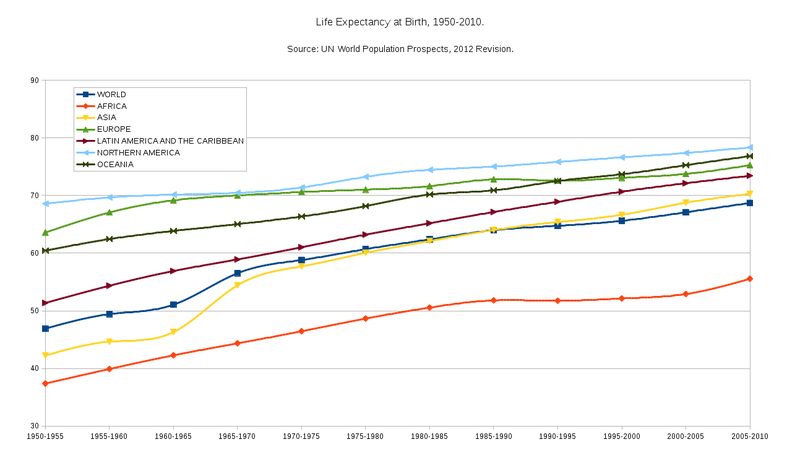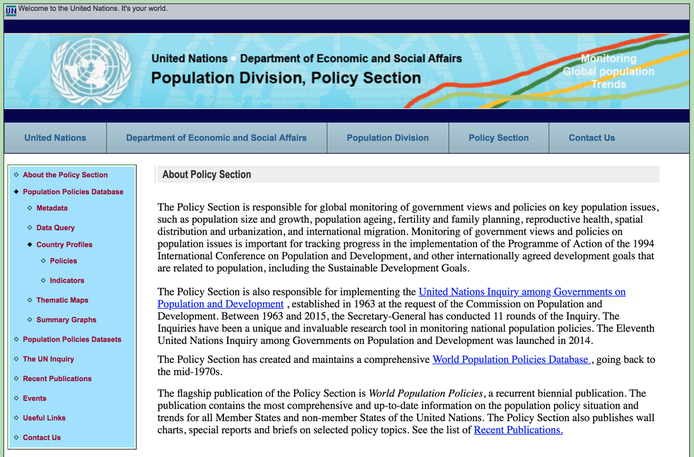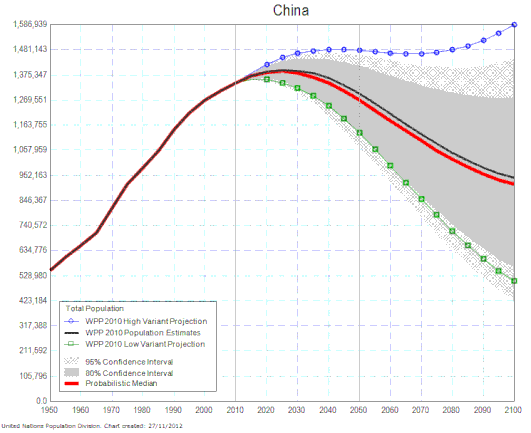Global Trends
View the graphs below:
- Discuss what is being shown in each.
- Describe any trends
- Make a list of some of the possible implications these might have on population.
Why is it important to have a stable population?
In some countries, population characteristics cause concern for government officials, politicians, demographers, and the general public. Some governments worry about rapid population growth, while others express alarm that the population is not growing quickly enough, or in some cases, that the population is actually declining. Other governments are concerned about skewed sex ratios, high dependency ratios, rapid population momentum, rates of migration that are too high or too low, and the forced movement of people as refugees or through human trafficking.
Codrington, Stephen. Our Changing Planet (Planet Geography Book 1) (Kindle Locations 3792-3796). Solid Star Press. Kindle Edition.
Codrington, Stephen. Our Changing Planet (Planet Geography Book 1) (Kindle Locations 3792-3796). Solid Star Press. Kindle Edition.
DEMOGRAPHIC DEPENDENCY RATIOS
The process of ageing of populations is not limited to high income countries. The “elderly dependency ratio” (the relation of old persons (65 years and above) to the economically active population (between 15 and 64) is on a steady increase even in Africa. However, the – actual and future – elderly dependency ratios in poor countries are quite a bit smaller than those in rich countries.
Read the article:
The process of ageing of populations is not limited to high income countries. The “elderly dependency ratio” (the relation of old persons (65 years and above) to the economically active population (between 15 and 64) is on a steady increase even in Africa. However, the – actual and future – elderly dependency ratios in poor countries are quite a bit smaller than those in rich countries.
Read the article:
| Dependency Ratio | |
| File Size: | 116 kb |
| File Type: | |
|
The Causes of an ageing populations
High life expectancy caused by:
|
|
Your browser does not support viewing this document. Click here to download the document.
| aging_population_consequences_geofile.pdf | |
| File Size: | 37 kb |
| File Type: | |
Your browser does not support viewing this document. Click here to download the document.
| Dependency ratio Case Study | |
| File Size: | 1300 kb |
| File Type: | docx |
|
Advantages of elderly workers
|
|
Population Policies
How do governments address population?
PRO/ ANTI-NATALIST POLICIES
These policies are created by the government to monitor young dependents population. If a country has too many young born compared to the economically active part, then if not controlled it could have a negative impact on the society and economy of the country. Like in China where a baby boom has been witnessed, the government had to do something so that the number of babies being born decreased. if this was to continue it would have a negative impact on government spending, therefore it would cost too much for population to have healthcare.
However, if a country has too few children then a pro natalist policy should be introduced so that when the economically active part goes to old dependent then the young ones will take the lead but if they are too few then the economy of the country will suffer because less pension for old and less healthcare for younger due to less people paying taxes in the economical active part.
These policies are created by the government to monitor young dependents population. If a country has too many young born compared to the economically active part, then if not controlled it could have a negative impact on the society and economy of the country. Like in China where a baby boom has been witnessed, the government had to do something so that the number of babies being born decreased. if this was to continue it would have a negative impact on government spending, therefore it would cost too much for population to have healthcare.
However, if a country has too few children then a pro natalist policy should be introduced so that when the economically active part goes to old dependent then the young ones will take the lead but if they are too few then the economy of the country will suffer because less pension for old and less healthcare for younger due to less people paying taxes in the economical active part.
Anti Natalist - One Child Policy China
|
Successes
|
Failures
|
|
|
|
|
|
|
| ||||||||||||||
|
Questions:
|
Demographic dividend
While most countries have seen an improvement in child survival rates, birth rates remain high in many of them, particularly in least developed countries. These countries, therefore, rarely enjoy an economic benefit known as the demographic dividend.
Demographic dividend is an occurrence in a country that enjoys accelerated economic growth that stems from the decline in fertility and mortality rates. A country that experiences low birth rates in conjunction with low death rates receives an economic dividend or benefit from the increase in productivity of the working population that ensues. As fewer births are registered, the number of young dependents grows smaller relative to the working population. With fewer people to support and more people in the labor force, an economy’s resources are freed up and invested in other areas to accelerate a country's economic development and the future prosperity of its populace.
To receive a demographic dividend, a country must go through a demographic transition where it switches from a largely rural agrarian economy with high fertility and mortality rates to an urban industrial society characterized by low fertility and mortality rates. In the initial stages of this transition, fertility rates fall, leading to a labor force that is temporarily growing faster than the population dependent on it. All else being equal, per capita income grows more rapidly during this time too. This economic benefit is the first dividend received by a country that has gone through the demographic transition.
First and Second Demographic Dividend
The first dividend period generally lasts for a long time - typically five decades or more. Eventually, however, the reduced birth rate reduces the labor force growth. Meanwhile, improvements in medicine and better health practices leads to an ever-expanding elderly population, sapping additional income and putting an end to the demographic dividend. At this stage, all else being equal, per capita income grows at a decelerated rate and the first demographic dividend becomes negative.
An older working population facing an extended retirement period has a powerful incentive to accumulate assets to support themselves. These assets are usually invested in both domestic and international investment vehicles, adding to a country's national income. The increase in national income is referred to as the second dividend which continues to be earned indefinitely.
The benefits gotten from a demographic transition is neither automatic nor guaranteed. Any demographic dividend to be gotten depends on whether the government implemented the right policies in areas such as education, health, governance, and the economy. In addition, the amount of demographic dividend that a country receives depends on the level of productivity of young adults which, in turn, depends on the level of schooling, employment practices in a country, timing and frequency of childbearing, and economic policies that make it easier for young parents to work. The dividend amount is also tied to the productivity of older adults which depends on tax incentives, health programs, and pension and retirement policies.
There are four main areas where a country can find demographic dividends:
Read more: Demographic Dividend | Investopedia https://www.investopedia.com/terms/d/demographic-dividend.asp#ixzz5FWsNal4e
Demographic dividend is an occurrence in a country that enjoys accelerated economic growth that stems from the decline in fertility and mortality rates. A country that experiences low birth rates in conjunction with low death rates receives an economic dividend or benefit from the increase in productivity of the working population that ensues. As fewer births are registered, the number of young dependents grows smaller relative to the working population. With fewer people to support and more people in the labor force, an economy’s resources are freed up and invested in other areas to accelerate a country's economic development and the future prosperity of its populace.
To receive a demographic dividend, a country must go through a demographic transition where it switches from a largely rural agrarian economy with high fertility and mortality rates to an urban industrial society characterized by low fertility and mortality rates. In the initial stages of this transition, fertility rates fall, leading to a labor force that is temporarily growing faster than the population dependent on it. All else being equal, per capita income grows more rapidly during this time too. This economic benefit is the first dividend received by a country that has gone through the demographic transition.
First and Second Demographic Dividend
The first dividend period generally lasts for a long time - typically five decades or more. Eventually, however, the reduced birth rate reduces the labor force growth. Meanwhile, improvements in medicine and better health practices leads to an ever-expanding elderly population, sapping additional income and putting an end to the demographic dividend. At this stage, all else being equal, per capita income grows at a decelerated rate and the first demographic dividend becomes negative.
An older working population facing an extended retirement period has a powerful incentive to accumulate assets to support themselves. These assets are usually invested in both domestic and international investment vehicles, adding to a country's national income. The increase in national income is referred to as the second dividend which continues to be earned indefinitely.
The benefits gotten from a demographic transition is neither automatic nor guaranteed. Any demographic dividend to be gotten depends on whether the government implemented the right policies in areas such as education, health, governance, and the economy. In addition, the amount of demographic dividend that a country receives depends on the level of productivity of young adults which, in turn, depends on the level of schooling, employment practices in a country, timing and frequency of childbearing, and economic policies that make it easier for young parents to work. The dividend amount is also tied to the productivity of older adults which depends on tax incentives, health programs, and pension and retirement policies.
There are four main areas where a country can find demographic dividends:
- Savings: During the demographic period, personal savings grow and can be used to stimulate the economy.
- Labor supply: More workers are added to the labor force, including more women.
- Human capital: With fewer births, parents are able to allocate more resources per child, leading to better educational and health outcomes.
- Economic growth: GDP per capita is increased due to a decrease in the dependency ratio.
Read more: Demographic Dividend | Investopedia https://www.investopedia.com/terms/d/demographic-dividend.asp#ixzz5FWsNal4e
Demographic Dividend - China
The demographic dividend and the ways in which population could be considered a resource when contemplating possible futures
|
|
|
|
|
Further Articles
|
